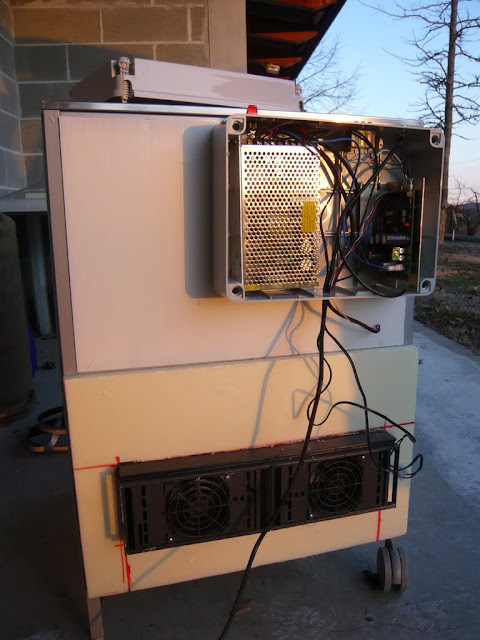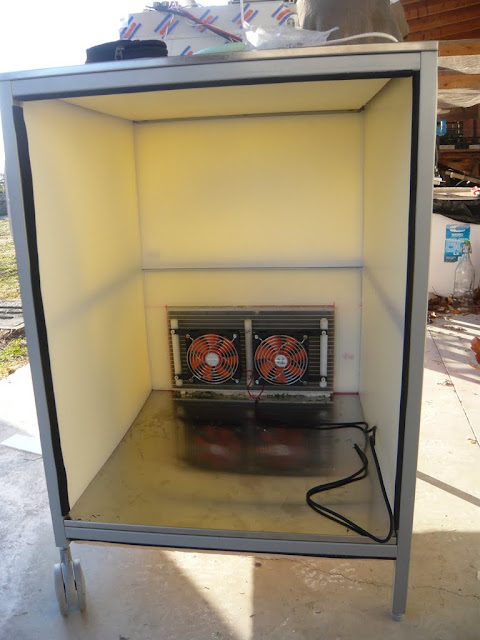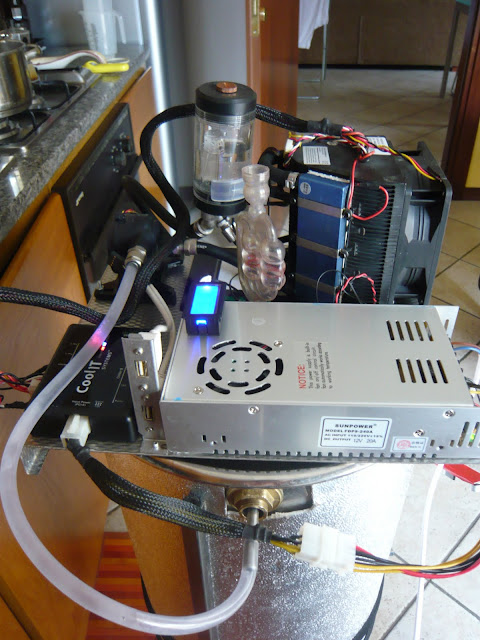xrattiracer
Member
Yes, my first post on homebrewtalk is about the fermentation chamber I have been building 
I have all of 2 brews under my belt, but I dont have a place with stable temperature and I love gadgets so hence this build. Also been wanting to use an Arduino for something, and this seemed perfect.
As an overview, I enclosed a stainless steel cart from Ikea with insulation and installed a peltier module. There are several reasons I went with this method.
1) Needs to be portable. My house is very small and the fermentation chamber normally lives in the spare bedroom, but needs to be able to be moved elsewhere if that room is needed.
2) Needs to be small. Kinda goes along with the above, but also necessitates the peltier module as there is not enough room for a compressor and associated plumbing.
3) Needs to be able to easily switch from heating to cooling. The climate here generally stays pretty close to fermentation temps, so there are times of the year when it will need to cool during the day and heat during the night. The peltier setup makes this easy.
4) Needs to be able to be monitored and controlled remotely. Because I can, mostly
Parts used, mostly sourced off ebay:
Ikea Flytta stainless steel cart.
1.5" styrofoam for insulation, with plywood walls.
Arduino mega with ethernet shield.
400 watt peltier module.
12v @ 36 amp switching power supply.
box of misc large heatsinks.
25 amp h-bridge controller.
DS18B20 OneWire digital temperature sensors.
Ikea Dioder LED strips (hey, it needs light inside, right?).
The physical built is complete, however I am having problems cooling the hot side heatsink with the weak fans I have, so I have some much stronger ones on order. If that still doesnt work, I will water cool the external side. And until I can get that under control, I can't start experimenting with PID control.
I have plenty more pictures, but this should get it started




I have all of 2 brews under my belt, but I dont have a place with stable temperature and I love gadgets so hence this build. Also been wanting to use an Arduino for something, and this seemed perfect.
As an overview, I enclosed a stainless steel cart from Ikea with insulation and installed a peltier module. There are several reasons I went with this method.
1) Needs to be portable. My house is very small and the fermentation chamber normally lives in the spare bedroom, but needs to be able to be moved elsewhere if that room is needed.
2) Needs to be small. Kinda goes along with the above, but also necessitates the peltier module as there is not enough room for a compressor and associated plumbing.
3) Needs to be able to easily switch from heating to cooling. The climate here generally stays pretty close to fermentation temps, so there are times of the year when it will need to cool during the day and heat during the night. The peltier setup makes this easy.
4) Needs to be able to be monitored and controlled remotely. Because I can, mostly
Parts used, mostly sourced off ebay:
Ikea Flytta stainless steel cart.
1.5" styrofoam for insulation, with plywood walls.
Arduino mega with ethernet shield.
400 watt peltier module.
12v @ 36 amp switching power supply.
box of misc large heatsinks.
25 amp h-bridge controller.
DS18B20 OneWire digital temperature sensors.
Ikea Dioder LED strips (hey, it needs light inside, right?).
The physical built is complete, however I am having problems cooling the hot side heatsink with the weak fans I have, so I have some much stronger ones on order. If that still doesnt work, I will water cool the external side. And until I can get that under control, I can't start experimenting with PID control.
I have plenty more pictures, but this should get it started










